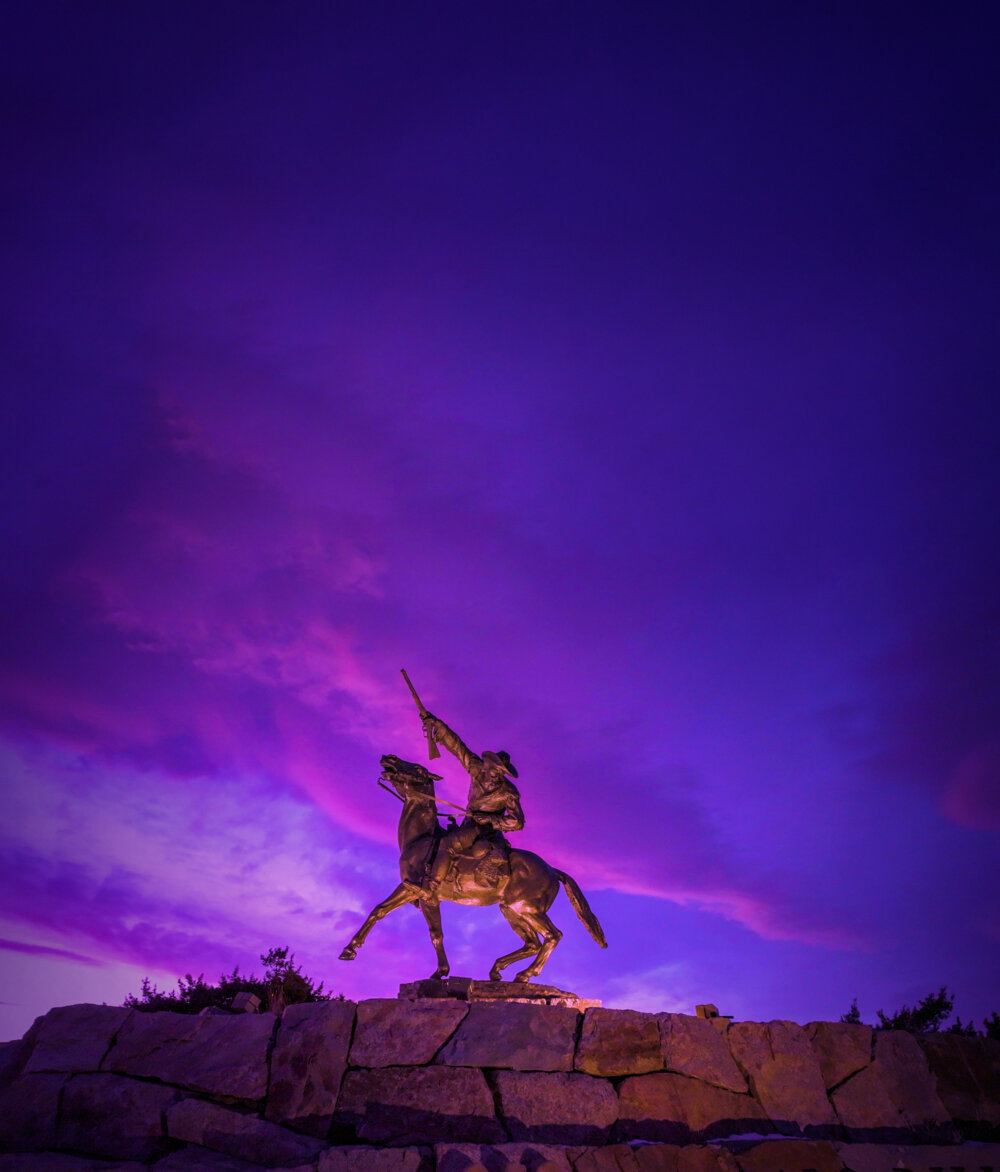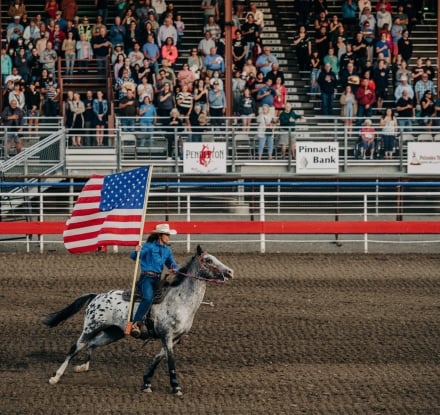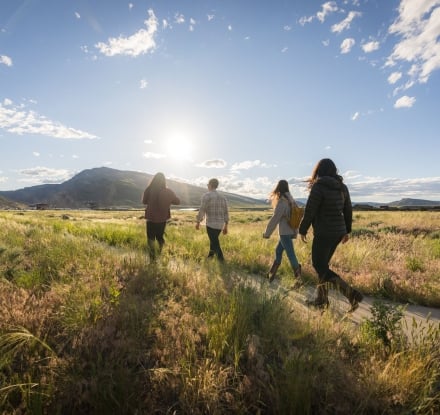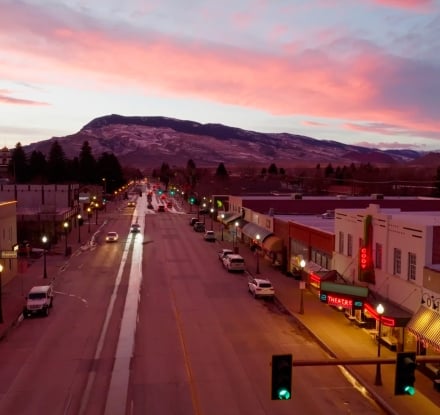
The Famous Women of Cody Yellowstone
March is a significant month. It comes in like a lion and goes out like a lamb. It brings us spring and St. Patrick’s Day, but most importantly, this month is also marked by the celebration of Women’s History Month. From abolitionists and authors to entertainers, artists, and historians, countless women are worth celebrating during Women’s History Month in Cody Yellowstone. Throughout the years, women have played a crucial role in shaping our region. They have fought tirelessly to preserve and celebrate local history and have been essential to the community. We honor these women today and every day by speaking their names and recalling their adventures.
Nancy-Carrol Draper
Supporter of Buffalo Bill Center of the West
Nancy-Carroll Draper was a dedicated benefactor and supporter of the Buffalo Bill Center of the West and was pivotal in establishing the Draper Museum of Natural History. Nancy had a habit of standing out, and not just because of her six-foot stance, but mostly because she stood up for her ideals and beliefs during a time when women were expected to be meek and quiet. Draper was an author, legislator, wildlife advocate, conservationist, dog breeder and consummate philanthropist. Although she was originally from Massachusetts, Nancy also enjoyed being a cattle rancher. She maintained a cattle ranch for many years on the outskirts of Cody Yellowstone.
Nancy fell in love with the area and began contributing to Cody’s Buffalo Bill Historical Center in the 1980s. She was consequently appointed to the advisory board of the center’s Whitney Gallery of Western art in 1985. After she settled in Wyoming full-time in 1988, she spearheaded the creation of a natural history museum at the historical center. She also made generous monetary contributions to its creation. In 2002, the first natural history museum to open in the 21st Century was finished, with all the credit going to Nancy.
Aiding the Draper Museum of Natural History
With its inauguration in 2002, the Draper Natural History Museum became the 100-year-old Center’s newest museum. Draper believed that the Center could and should integrate the natural sciences with humanities to give visitors to the museum a broader perspective on the American West.
Draper said she wanted a natural history museum to commemorate and interpret the Yellowstone area. She called it the missing link. It was a goal of her mission for visitors to interact with the different ecosystems that make Cody Yellowstone such a unique destination. You can explore the local legends, cultures, and artworks of the Wild West at the expansive Buffalo Bill Center of The West. Also worth noting is that your ticket is good for two days of exploring, so you can visit all five museums at your leisure!


Estelle Ishigo
Life at Heart Mountain Confinement Site
An artist and a musician, Estelle Peck Ishigo was a white woman who married a Japanese American, Arthur Ishigo. She is best known for chronicling her life at the Heart Mountain concentration camp in Wyoming. Although Estelle was not required to join her husband in the relocation efforts after the attack on Pearl Harbor, she chose to accompany him. The camp was one of ten throughout the West, where 120,000 incarcerated men, women, and children were imprisoned post-Pearl Harbor after President Franklin Delano Roosevelt signed Executive Order 9066, depriving Japanese Americans of their liberty.
Her Artwork Depicting Life in the Internment Camp
A talented artist, Ishigo chronicled the day-to-day lives of the 14,000 camp residents with sketches, drawings and watercolors depicting the brutal conditions of the camp and camp life. From the initial roundup, Estelle took it upon herself to use her artistic talents to document what was happening to Japanese Americans. She thought it was essential to document everyday life in the camp, so that history wouldn’t forget how Japanese Americans were treated during these years. Estelle’s art depicts moments of optimism and resilience during difficult times, but also focuses on the dire conditions they lived under. She took an active role in camp life, working as an artist and art editor for the Pomona Camp newspapers. Her co-editor was the noted graphic artist S. Neil Fujita. Estelle also organized a string ensemble while in the camps and taught violin at Heart Mountain. The Ishigos stayed at Heart Mountain until its very last day so that Estelle could document the camp’s closing. Her contributions are essential to the area’s history and help put life inside the camp into perspective.
You can learn more about Heart Mountain and the life of the Japanese Americans who were placed there at the Heart Mountain WWII Interpretive Center.
Cassie Waters
Cassie Waters was a young widow, sporting lady, madam, and respected businesswoman with a high spirit of generosity and goodheartedness. Waters arrived in Cody around 1904 with her engineer husband, who was hired to work on building the Shoshone Dam. Unfortunately, her husband died unexpectedly, so Cassie had to improvise and find a job to provide for herself. Cassie went to the infamous ‘White House’ on Prostitute Row for a job. After working for a while, she took over the ‘Green House’ next door. Eventually, the city asked her to move her operation, which resulted in the creation of Cassie’s Supper Club. Over the years, the industrious Cassie added to the structure, including a dance floor and several cabins. Eventually, Waters decided to go legit. She let her girls go, retired, and adopted two children. Cassie’s Supper Club is still in operation today, so if you’re looking for a spot to dine and dance, you’ll feel right at home at Cassie’s!
The Businesswoman of the 1900s
Cassie Waters might have been the CEO of any major company today or at least the president of the Chamber of Commerce, but in 1912 when options were more limited, she founded one of the town’s most successful houses of prostitution. Although many in the town frowned upon the establishment, they appreciated her generosity when it came time for contributions to schools and charitable organizations. Waters was a success as a business owner and serves as a reminder of the importance of breaking through gender stereotypes and pursuing one’s dreams.
Caroline Lockhart
Best-selling Novelist and Editor
Caroline Lockhart was the editor and publisher of the Cody Enterprise and a best-selling novelist with a penchant for fraternizing with Hollywood and society types. Lockhart moved to Cody Yellowstone around 1904 and remained there for most of her life. She owned the daily newspapers, a cattle ranch in the area, and founded the famous ‘Cody Stampede.’ Lockhart never married, instead focusing on becoming a newspaper publisher, journalist, western novelist, rancher, and rodeo sponsor.
In 1920 Lockhart got together with other prominent figures in Cody to organize a new celebration of the town’s spirit. Something bigger and better than Cody had ever seen before. They intended to draw tourists passing by on their way to Yellowstone National Park toward Cody and its local dude ranches. Together they created and named the Cody Stampede. Caroline hoped to bring attention to the idea and culture of the ‘Old West’ and the ‘Wild West’, both of which she felt were being phased out at the dawn of the 20th century. Caroline organized a fundraising ball to raise funds for the stampede and invited members of the Crow Nation to appear in battle dress. The ball was a huge success and has become a tradition in Cody Yellowstone.

The Creation of “The Scout”

Caroline Lockhart was a Wyoming woman that wasn’t afraid of fighting for her passions. Whether it be drinking whiskey with the cowboys, writing novels and getting them published under her real name, or taking over the town newspaper and even leaving a legacy for Buffalo Bill. It was Lockart who first suggested the idea of erecting a statue in honor of the town’s founder. Caroline approached Gertrude Vanderbilt Whitney, a famed sculptress. Lockhart persuaded Vanderbilt Whitney to create “The Scout,” the regal sculpture of Buffalo Bill Cody that greets visitors to the Buffalo Bill Center of the West. She was also responsible for fundraising for the monument, which led to much of Cody’s early posthumous fame. So next time you’re in Cody Yellowstone and see the statue, snap a picture of it and think not only of Buffalo Bill, but also of Caroline Lockhart, the best cowgirl in the Wild West.
Mary Jester Allen
The Woman Who Brought Buffalo Bill’s Legacy to Life
Mary Jester Allen was Buffalo Bill Cody’s niece, and she also played a significant and lasting role in the history of the Buffalo Bill Center of the West. Thanks to her tireless cajoling, nagging and elegant persuasion, numerous members of the Cody family supported the museum’s establishment by donating their personal Buffalo Bill objects. Her efforts helped to preserve and bring Buffalo Bill’s legacy to life.
Mary was also instrumental in maintaining the original log cabin museum where Buffalo Bill had resided. She was able to keep the museum open and functioning throughout the Great Depression and World War II. Mary dreamed of a suitable memorial to her uncle, so alongside Caroline Lockhart, these determined women persuaded wealthy patrons to raise funds necessary to see the statue become a reality.
Grace Raymond Hebard
An Influential Historian and Advocate for Women’s Rights
Talented and ambitious, Grace Raymond Hebard has remained a well-known figure and historian throughout Wyoming. She became the first woman to graduate from the University of Iowa with a degree in civil engineering. Grace eventually moved to Wyoming, where she became the first woman to sit on the University of Wyoming Board of Trustees. Hebard continued her streak of firsts by becoming the university’s first librarian. She also joined the advisory board for the Wyoming Historical Association, which put her in a position to gather unique historical research, which she later used to write books dedicated to Wyoming history. Several of her books remain in print today, continuing Hebard’s influence on the history of Wyoming and the West.
Hebard also strongly supported and was politically active as a suffragette. She played an important role in the successful campaign to grant Wyoming women the right to vote in 1869 and eventually served as the vice president of the National American Woman Suffrage Association from 1912 to 1914. These accomplishments would have been substantial for anyone at the time and presently, which makes them all the more impressive when placed historically at the time that Grace was alive.
Above all, Hebard was an advocate for women and the role they played in history. She sincerely believed that women’s roles in history were an important field of study and advocated for including women’s perspectives in the historical record.
Shaping History
These are just a few of the many relentless, skillful, and passionate women who have made Cody Yellowstone their home and have shaped our communities in one way or another. So the next time you visit our wonderful corner of the world, think of them and thank them. To all of them and to the many, many more whose work goes unnoticed or unappreciated, we say thank you, and we honor you this month and forever more.
Ready to plan your getaway to Cody Yellowstone? Request your free copy of our 2023 Adventure Guide Today! It’s full of valuable information for planning an amazing getaway right here in the Best Western Town in America and throughout our region!
And while you’re here, be sure to visit the Buffalo Bill Center of the West to learn more about the incredible women who have shaped Cody Yellowstone.






